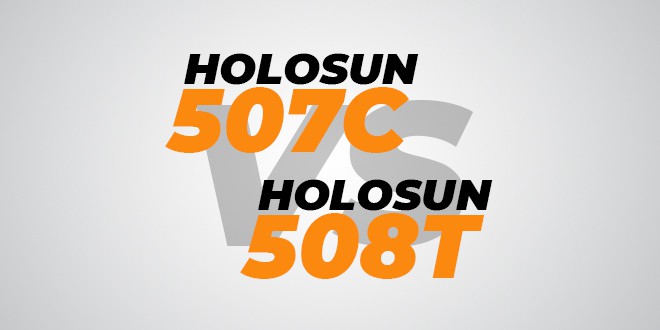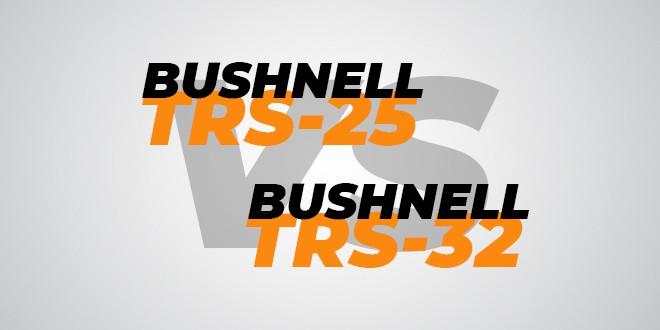When it comes to finding the best red dot sight for your firearm, it is not easy to decide with so many options out there. With an outgrowing market for different accessories for your handguns and rifles, it is always confusing.
Amidst the race to take the place of the best optical sights in the market, Trijicon and Vortex have never failed to put the best versions of scopes and red dot sights. That’s why today we have decided to compare the two well-known names in the weaponry market.
The Trijicon RMR red dot sight and Vortex Optics Venom sight create a perfect opportunity for a battle among the best. And, it has become a must to look at the similarities and contrasting features of both optics and find out which one has outdone the other.
So, let’s look at the specifications both the sights offer first and then discuss the differences between them. Finally, we will give a summary of which one will be a perfect companion for your weapon.
Trijicon RMR/ Vortex Venom – Outlooks
Trijicon RMR/ Vortex Venom – Specs
| Specs | Trijicon RMR (Type 2) | Vortex Venom |
|---|---|---|
| Magnification | 1X | 1X |
| Reticle | 3.25 MOA, 6.5 MOA | 3 MOA, 6 MOA |
| Battery | CR2032 | CR1632 |
| Brightness settings | 8 | 10 |
| W/E Adjustments | 1 MOA per click | 1 MOA per click |
| Eye Relief | Unlimited | Unlimited |
| Mount | Trijicon RMR Mount | Weaver/Picatinny |
| Weight | 1.2 oz | 1.05 oz |
| Waterproof | ✔ (66 ft) | ✔ |
| Dimension | 1.9”x1.11”x1.02” | 1.8”x1.1”x1” |
Difference Between Trijicon RMR and Vortex Venom
From the specifications of both RMR and Venom, we can see that they have some basic similarities which you will easily find in any other optical sight. Now then let’s talk about what contrasting qualities both sights possess.
- Both the red dot sight have different footprints and mounting styles that make them compatible with different kinds of firearms.
- These two models use different types of batteries which give separate runtime.
- Although you get two different options for each of the sights, their reticles and glass construction are distinct from each other.
- They have similar kinds of housing material so both the sights are durable and waterproof but they differ in weight and water resistance level.
Read More: Venom or Fastfire!
Which One Suits You More?
Since we have jotted down all the distinct characteristics, let’s discuss the points elaborately to find out which red dot sight will give you a better shooting experience.
Battery
It is essential to compare the footprints of the two sights because it will give you an insight into their compatibility and mounting style.
RMR: The Trijicon has a personalized version of the footprint for their RMR sights. They all have the RMR mounting standard as a footprint which is compatible with certain handguns. However, for pistols like Glock MOS or Springfield QSP, you will need to purchase a separate mounting adapter which can be a hassle.
Venom: The Vortex Venom footprint compatibility follows the Noblex mounting standard which supports a wide range of firearms. In addition, the sight supports the Weaver/Picatinny mounting style so that you can attach this sight to any of the handguns and rifles with Picatinny rail.
In the case of footprint and mounting style, the compatibility of both sights gives us a different picture. Since the Trijicon RMR sight demands an extra adaptor for mounting on certain guns, it is not as versatile as the Vortex Venom sight and so the Venom red dot sight is preferable in this regard.
Battery
To get an idea of the runtime of any scope or red dot sight, you need to check the battery type and lasting time. In the case of battery type and lifetime, we find a massive difference between the RMR and Vortex optics.
RMR: This red dot scope comes with a CR2032 lithium battery which has a lifetime of 35,000 hours to 4 years depending on the brightness settings and surrounding temperature.
Venom: On the other hand, the Vortex Venom red dot sight uses a CR1632 lithium battery that can last from 150 hours at the highest brightness setting to 30,000 hours at the lowest setting.
The CR2032 battery of the RMR sight is more popular and easily available in the market and lasts quite longer than the CR1632 Venom sight battery. This is why, the Trijicon model beats Venom Sight in this round.
Reticle & Glass Construction
The next point we are going to discuss is the reticles and glass material of the models.
RMR: When it comes to reticles, RMR has two different dot reticles you can choose from. The 3.25 MOA reticle is perfect for any long-distance target shooting whereas the 6.5 MOA will cover you pretty well for short-range aiming. With the anti-reflective multi-coating glass, the lens has dual illumination and 8 auto-brightness settings to support different light conditions.
Venom: The Vortex Venom also has two different dot sizes for the reticles. You can choose the 3 MOA reticle for your long-distance hunting or you can go for the 6 MOA dot to shoot any close-range fast-moving target. In addition to the anti-reflective fully multi-coated lens, you are getting 10 different brightness settings to choose from during low light situations.
Although both the models have top-quality lens glasses and reticle options, you are signing up for a better deal if you choose the Venom sight as the red dot has more brightness options and higher quality lenses.
Durability & Weight
Lastly, let’s talk about the durability and weight of both the red dot models.
RMR: The Trijicon RMR optic has a military standard forged aluminum alloy housing which is rugged and durable enough to withstand strong calibration. It is waterproof and submersible to 66 feet underwater for an hour. The sight weighs only 1.2 ounces which makes it easy to carry sound and pair up with other optical accessories.
Venom: Similarly, Vortex Optics has never comprised when it comes to the quality of the housing materials for their optics. The Venom series has high quality and strong aluminum construction which is waterproof and fogproof. Besides, the Venom lens has a specialized Armortek coating to keep the glass scratch-proof along with the anti-reflective effect. It weighs 1.6 ounces with the Picatinny rail and 1.05 ounces without it.
For portable and military standard usage, the Trijicon RMR sight will prove to be a more durable product. Whereas, it is better to choose Venom for hunting purposes especially because of the anti-scratch coating.
Trijicon RMR/ Vortex Venom – Videos
Summary
After going through all the important points of both the Trijicon RMR and Vortex Venom red dot sight, it is clear that both the sights possess some great quality features. Although both of them work as a great scope option for any firearm, you will find it difficult to choose the RMR sight for its unique footprint.
Besides the battery quality, Venom Red Dot Sight has proven to be a better choice, especially for professional hunters. However, that does not mean that the RMR sight is any less. For military operations, it is still more preferable than any other optical sight.
Hi, I’m Brent Hansford. A writer turned hunter & now sharing my love for the sport through writing. As I practically breathe weapons, I firmly believe I’m capable of providing you with new knowledge about firearms and hunting. My mission is to help more people get better at hunting & master the weapons. Let me help with unleashing the beast within you!




